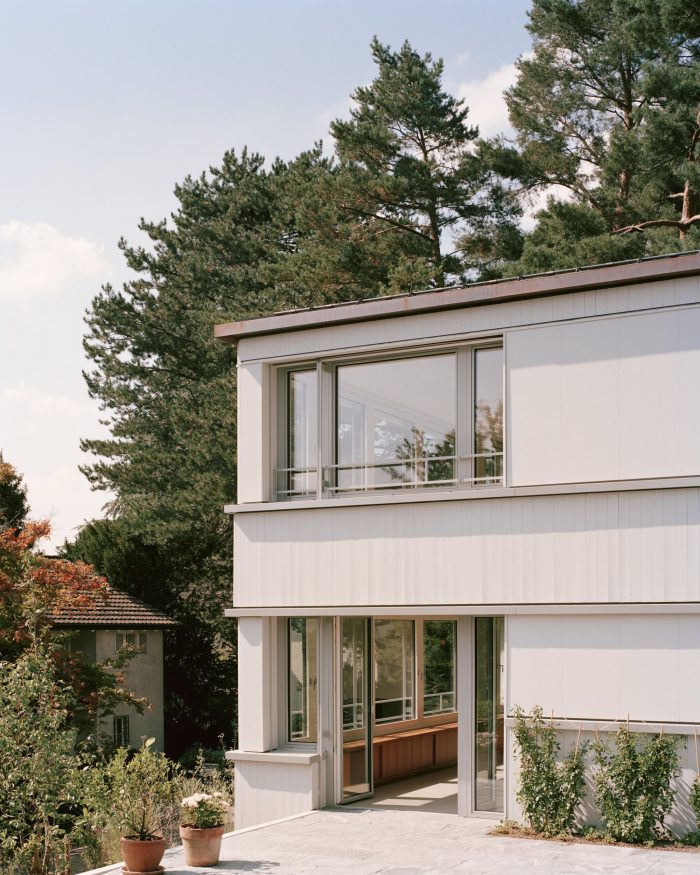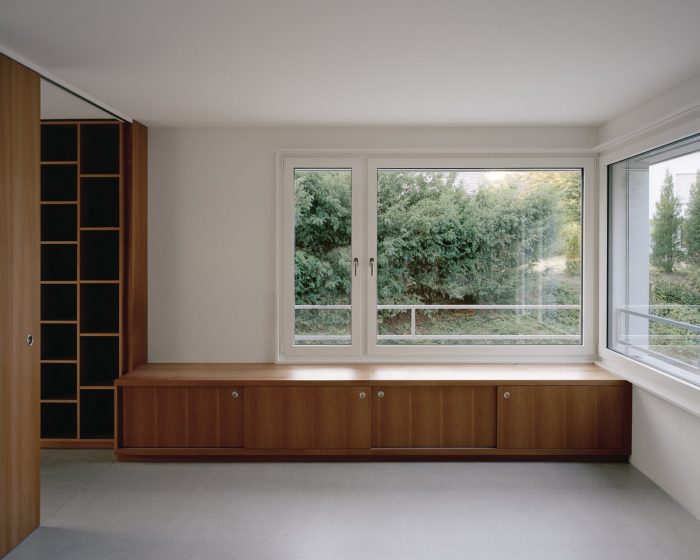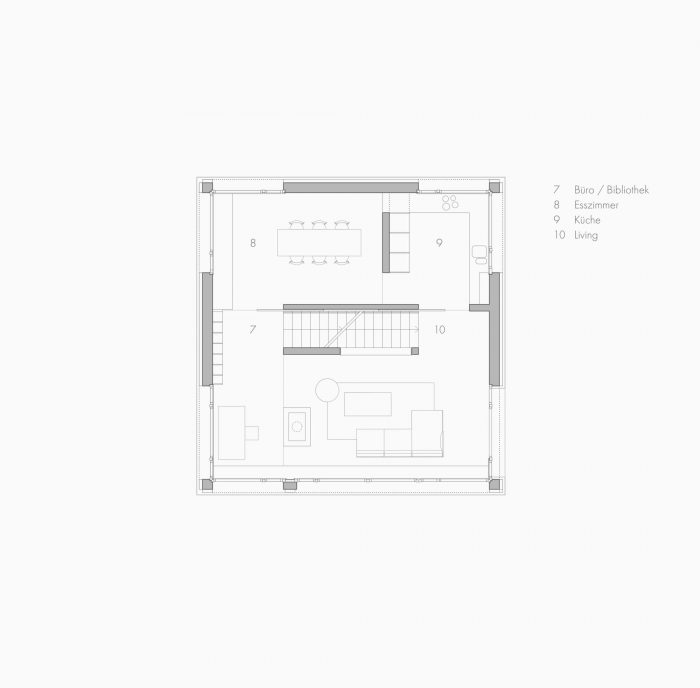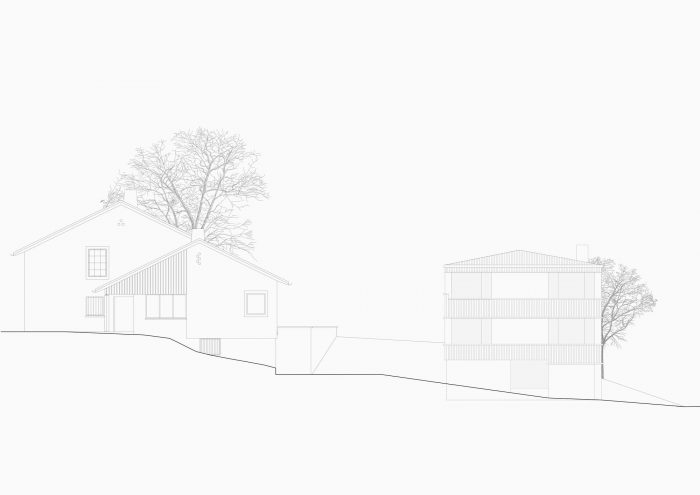在温特图尔的郊区,一座新的住宅楼融入了一个建于50年代的社区。宽阔的地块上有后退的别墅和精心打理的花园,这就是画面的特点。松树、云杉和落叶树高高耸立在房屋上,在中间的空间里可以看到埃申堡的景色。一座带有大花园的两层楼的独立屋在这条私人道路上已经存在了60年。
On the outskirts of Winterthur, a new residential building blends into a neighborhood built in the fifties. Wide plots of land with set-back villas and well-tended gardens characterize the picture. Pines, spruces, and deciduous trees tower over the houses and provide a view of the Eschenberg in the spaces in between. A two-story detached house with a large garden has existed on the property on a private road for 60 years.
业主希望为他们的晚年生活提供一个较小的、独立的、低维护的生活空间。在现有的别墅和私人道路之间的新房子符合这一要求,并能最大限度地利用该物业。
The owners wanted a smaller, independent, low-maintenance living space for their old age. A new house between the existing villa and the private road meets this requirement and allows maximum use of the property.
新建筑应与街道上的两到三层楼房相适应,提供通往花园的通道,并开辟对面的埃申堡山的视野。一个简单的带坡屋顶的房子面向街道,与现有的房子形成对应关系。一个新的公共前院为两座房子提供了通道,并作为一个有代表性的到达和停车区域。生活空间分布在三层,向四面八方开放。最底层是入口,一个工作室和辅助房间。在中间,有一个连续的生活区,可以通向一个私人花园。在顶层是卧室,可以看到风景。
The new building should fit in with the two- to three-story buildings on the street, provide access to the garden, and open up views of the Eschenberg mountain opposite. A simple house with a pitched roof faces the street and creates a counterpart to the existing houses. A new common forecourt provides access to both houses and serves as a representative arrival and parking area. The living space is distributed over three floors, which open onto all sides. The lowest floor houses the entrance, a studio, and ancillary rooms. In the middle, there is a continuous living area with access to a private garden. On the top floor are the bedrooms with views of the landscape.
一个中央楼梯与房子的结构设计有关,将房间分割开来,并为房间的使用留下空间。这种安排使人们可以在两个主要楼层自由地环形移动,从而体验到地平线的所有方向。这种特殊性通过一个水平衔接的结构反映在外墙上。大的窗带将主立面与街道和景观衔接起来。木质结构的落叶松外墙将房屋置于郊区环境中,并采用了 “Stöckli “的概念,使两代人可以在近处和远处共同生活。
A central staircase is relevant to the structural design of the house, divides the rooms, and leaves space for their use. This arrangement allows one to move freely in a circular motion on the two main floors, thus experiencing all directions of the horizon. This peculiarity is reflected on the facade by a horizontally articulated structure. Large window belts articulate the main facade to the street and to the view. Construction in wood with a painted larch facade locates the house in the suburban context and takes up the idea of the “Stöckli”, which allows two generations to live together in proximity and distance.
室内的特点是用Elsbeer木材制成的装置,这些装置贯穿所有房间。大型推拉门将各个房间分开,并允许开放使用。边柜、架子和柜子提供了存储空间,并邀请用户坐下。高质量的饰面与整个房子使用的白漆墙和赭石地板形成鲜明对比。
The interior is characterized by fixtures in Elsbeer wood, which run through all rooms. Large sliding doors separate the individual rooms and allow for open use. Sideboards, shelves, and cabinets provide storage and invite the user to sit. The high-quality finishes contrast with the white-painted walls and ochre flooring used throughout the house.
Architects: Dettling Architekturstudio
Area : 150 m²
Year : 2018
Photographs :Rory Gardiner
Manufacturers : Mawa Design, Staffieri Fireplaces
Cooperative Architect : Emmanuel Schoop, Maurizio de Santis, Hans – Jörg Sauter
City : Winterthur
Country : Switzerland























